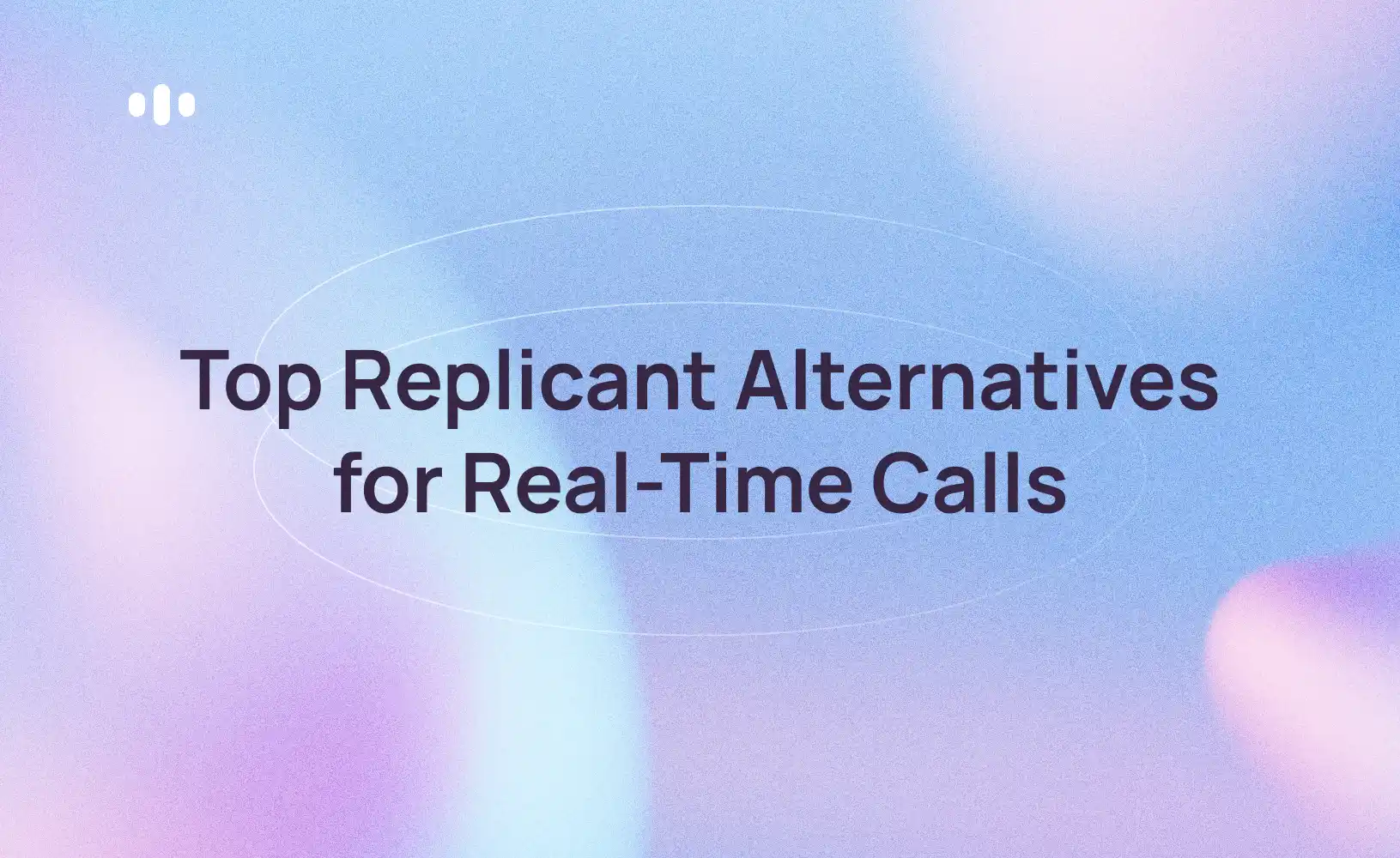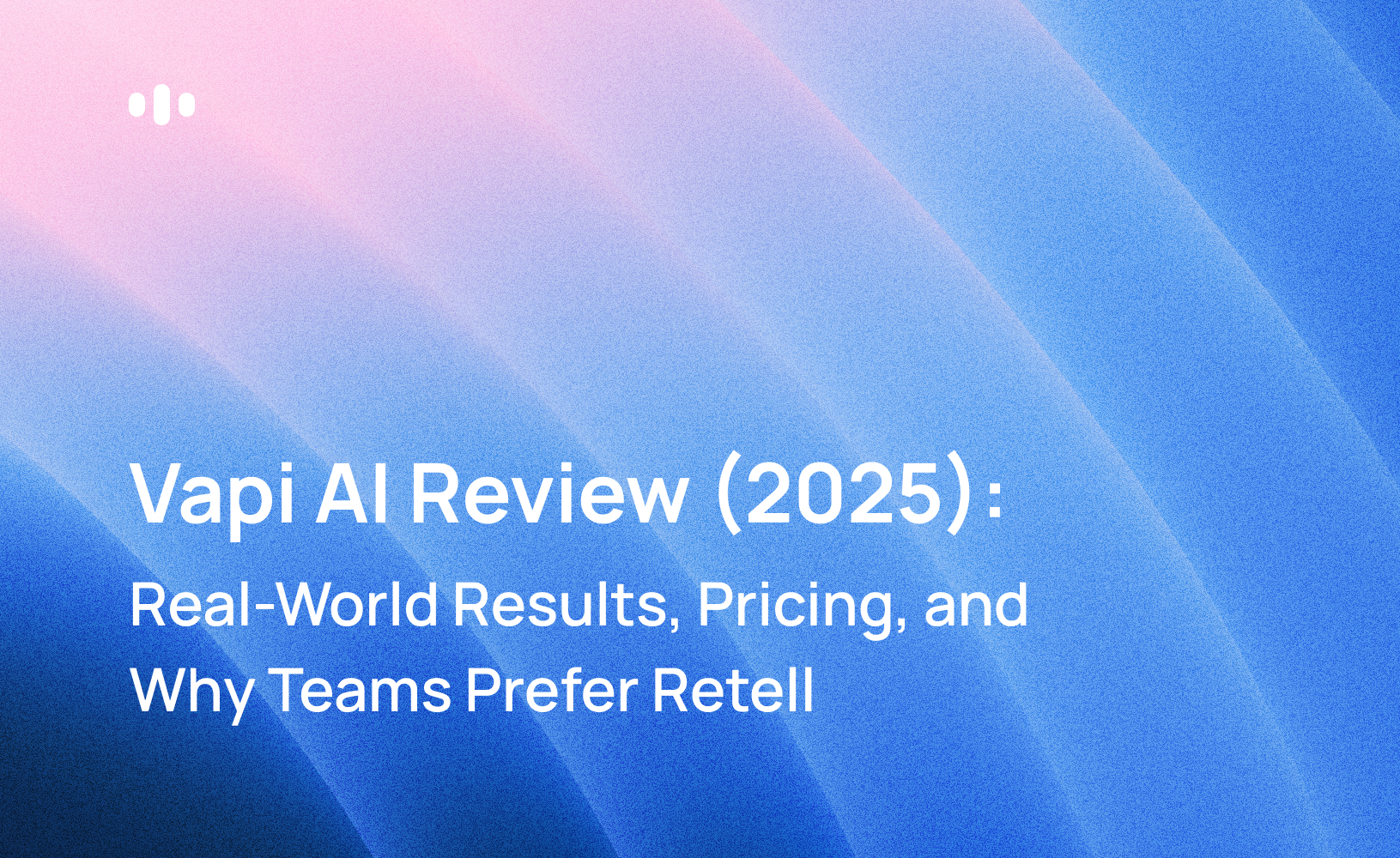
For decades, customer service has been broken–long queues, unresponsive helplines, and frustrated agents struggling to keep up.
But that’s changing.
AI voice agents now handle inbound and outbound calls as naturally as humans. The AI voice market is projected to hit $47.5 billion by 2034, with 97% of adopters reporting revenue growth.
One of the most popular AI voice agent platforms among developers is Vapi AI. It gives technical teams the freedom to build sophisticated voice agents from scratch with sub-500ms latency that promises fast, natural-sounding conversations.
But if you want the same level of customization without the technical headaches, Retell AI is the way to go. Its low-code platform and pre-built integrations let you build and launch AI agents in just five minutes.
In this Vapi review, we’ll walk you through Vapi AI features–covering the setup, pricing, and overall performance - and why so many businesses switch from Vapi to Retell AI.
Vapi AI is a developer-centric AI voice assistant to help you create, test and deploy voice assistants into web or mobile apps, CRMs, or customer service systems. Its primary uses are handling inbound customer queries, executing outbound sales campaigns, or conducting market research.
Every feature of Vapi AI can be accessed through its API (that’s where the name Vapi comes from), which developers can programmatically control.
The platform offers thousands of possible configurations through its API, including:
The core idea behind Vapi’s “bring your own stack” is that it gives businesses the utmost freedom to plug in their favorite applications at each stage of agent building.
While this may seem like a dream setup, businesses with limited tech bandwidth often struggle to maintain it; besides, they have to bear the cost of the speech-to-text, LLM, and voice model, along with Vapi's premium pricing.
Vapi AI functions as a powerful orchestration layer, connecting multiple systems together to deliver seamless, human-like conversations in real time.
Its infrastructure includes three major components: Speech recognition (STT), Language understanding (LLM), and Speech synthesis (TTS).

Developers can also fine-tune every aspect of the conversation flow, including:
This setup is not unique to Vapi AI. It's a common infrastructure used by voice agents. However, its ability to mix and match models, fine-tune each component and embed Vapi APIs into websites, apps, or phone systems is distinguishable.
Vapi AI offers some genuinely impressive features that give developers end-to-end control of how their voice agent performs. Let’s look at some of them:
Your voice platform is as smart as its setup. Its configuration is what creates secure, reliable and customisable voice agents.
In this aspect, Vapi AI is super flexible; you can mix and match models for different stages of the conversational flow. Currently, Vapi supports a wide range of providers across different components:
You can easily create hundreds of configurations to improve customer communication and leverage ultra-realistic voice AI capabilities.
While this flexibility is great for developers, it can overwhelm non-technical teams. Choosing the right configuration, fine-tuning agents to prioritize cost, speed and quality, and troubleshooting performance issues is tech-heavy.
Don’t have much expertise in building voice agents? You can choose a low-code solution like Retell AI.
For an AI voice agent to be successful, it should speak your audience’s language. The tone, accent and local dialect must align with how your users naturally communicate.
Besides offering a curated selection of high-quality Vapi voices, it supports multiple Text-to-Speech (TTS) providers, including ElevenLabs, Cartesia, Rime AI, Deepgram and Azure.
Microsoft Azure alone supports 140+ languages and 400 voices out of the box. Each language model in Vapi AI supports all associated accents and dialects.
Further developers can fine-tune their agent’s pitch, tone, speaking speed, and emotion to match brand personality or user preference. Whether you want a warm, conversational tone for customer support or a crisp, professional voice for sales calls, Vapi makes it easy to tailor every aspect of speech output.
While Vapi AI includes built-in tools for the most common use cases, like booking appointments or sending messages, you can extend the capabilities for your agent by connecting it to external APIs, databases, or business logic.
Custom tools go beyond simple conversions and provide systems with up-to-date insights that are outside their LLM's knowledge repository.
For instance:
You can define them inside your Vapi agent configuration, so that the model can call those functions whenever relevant in a conversation. However, this requires technical assistance both for initial development and ongoing maintenance.
Besides, Vapi AI integrates with over 40+ apps, including Hubspot, Notion, OpenAI, Clay, Zapier and many more.
Vapi AI Flow Studio is a visual, no-code, drag-and-drop visual flow builder that maps out the basic conversations of your AI agent. With Vapi Flow, Blocks are the core builders of this mult-step workflow.
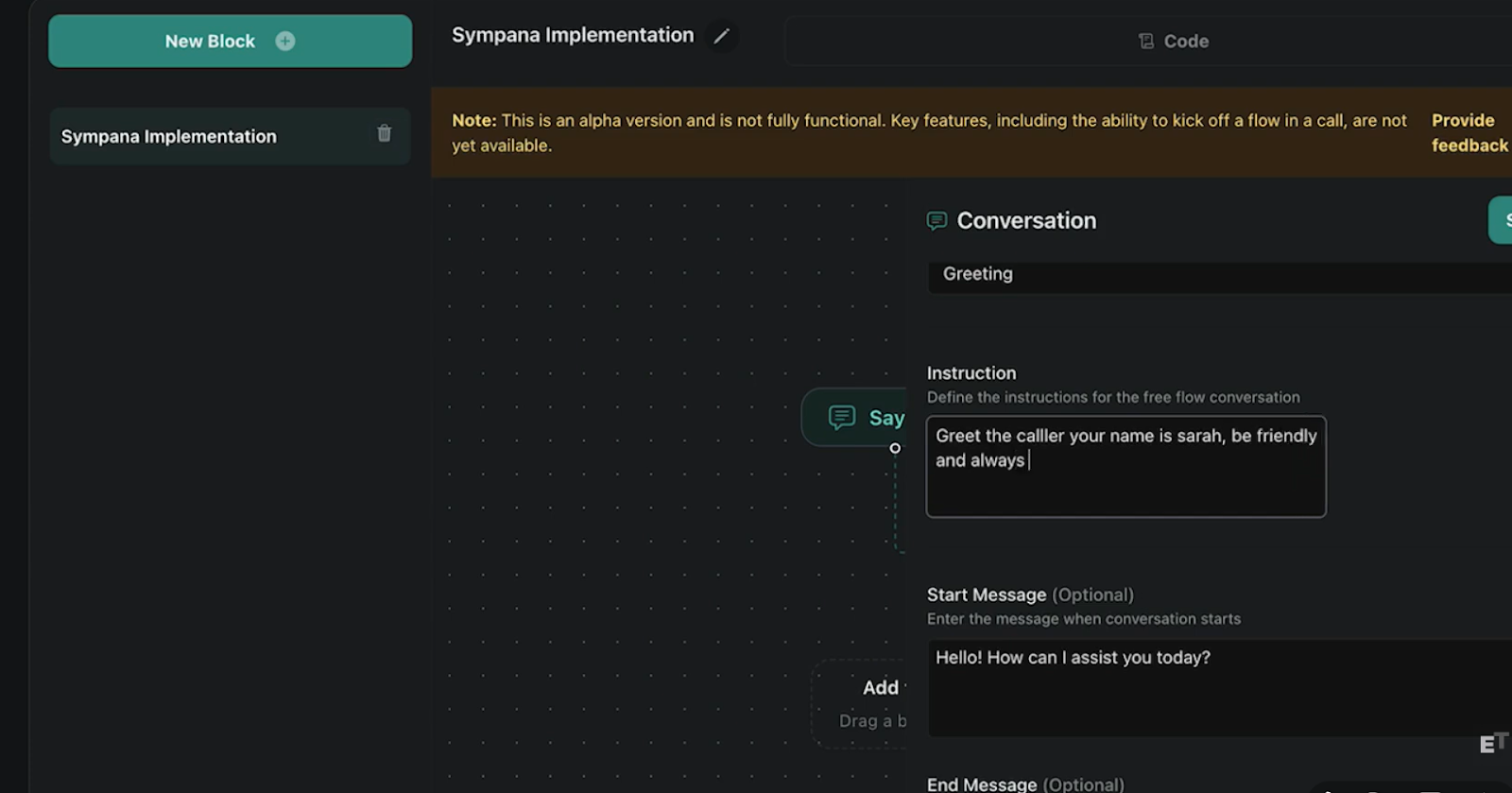
Combined, it controls the conversational flow of your agent when a certain tool is being used, which in turn will increase the accuracy of the voice agent.
Squads take it one step ahead and allow you to create different agents for different tasks. For instance, one AI agent can exist to qualify leads while another works to set appointments.

But it's important to know its limits. While these features help sketch out a basic path, anything more complex will require pulling data from an external API. It's a visual guide, not a true no-code platform, since it requires developers with code and configurations.
Vapi offers two paid pricing models:
| Plan Type | Base Rate | Typical Total Cost | Key Limitations |
|---|---|---|---|
| Pay-as-you-go | $0.05/minute | $0.30-0.33/minute | 10 concurrent calls max |
| Enterprise | Custom pricing | $40,000-70,000/year | Requires technical team |
| Free Trial | $10 credit | ~150-200 minutes | Limited testing only |
Vapi’s hosting cost starts at $0.05 per minute, but it's actually a fraction of the total deployment cost. Most users discover that agent deployment involves 4–6 different providers, including transcription, LLM, voice and telephony costs.
The true meaning of “bring your own stack” means that you’ve paid for all the providers, including Vapi’s hosting fee, to efficiently run your AI voice agent.
Here’s a breakdown of what actually contributes to Vapi’s actual cost per minute:
When you add this up, the actual cost comes around $0.13 - $0.31+
Besides, businesses choosing “pay-as-you-go” pricing have to pay $1,000 per month add-on for HIPAA compliance.
This multi-part pricing structure means you could receive up to five invoices to run a voice agent. Vapi AI makes budgeting difficult and creates significant overhead costs.
Retell AI offers a more transparent pricing compared to Vapi AI. Its pay-as-you-go model comes with a flat fee of $0.07+/minute for AI voice agents and $0.002+/msg for AI chat agents.
Unlike Vapi, there’s no extra cost for key features:
This allows businesses to customize features without any unexpected costs.
Our pricing plan also comes with a dedicated voice agent cost calculator where you can check its pricing based on the number of calls, LLM, voice engine and telephony used.
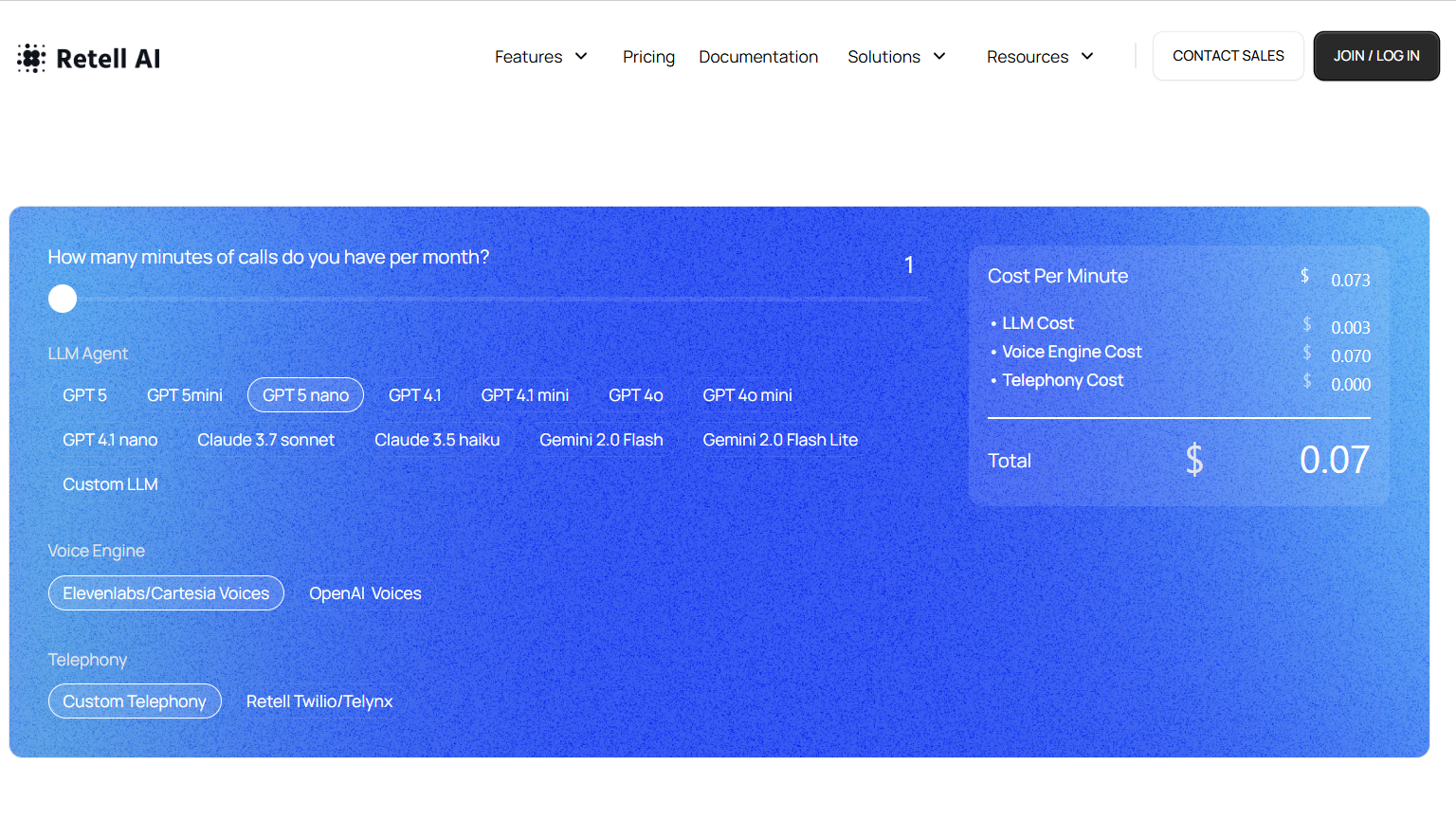
Calculate your voice agent pricing from here.
Vapi AI has gained interaction by establishing itself as a flexible, middleware layer that allows developers to bring their own stack.
But this flexibility comes with a cost. Since Vapi AI connects with a wide array of external API providers, if any of the infrastructure layers face latency issues, it will directly affect the performance of your AI voice agent.
Users have reported a latency issue of 6-7 seconds that can completely ruin call quality and hurt the customer experience.
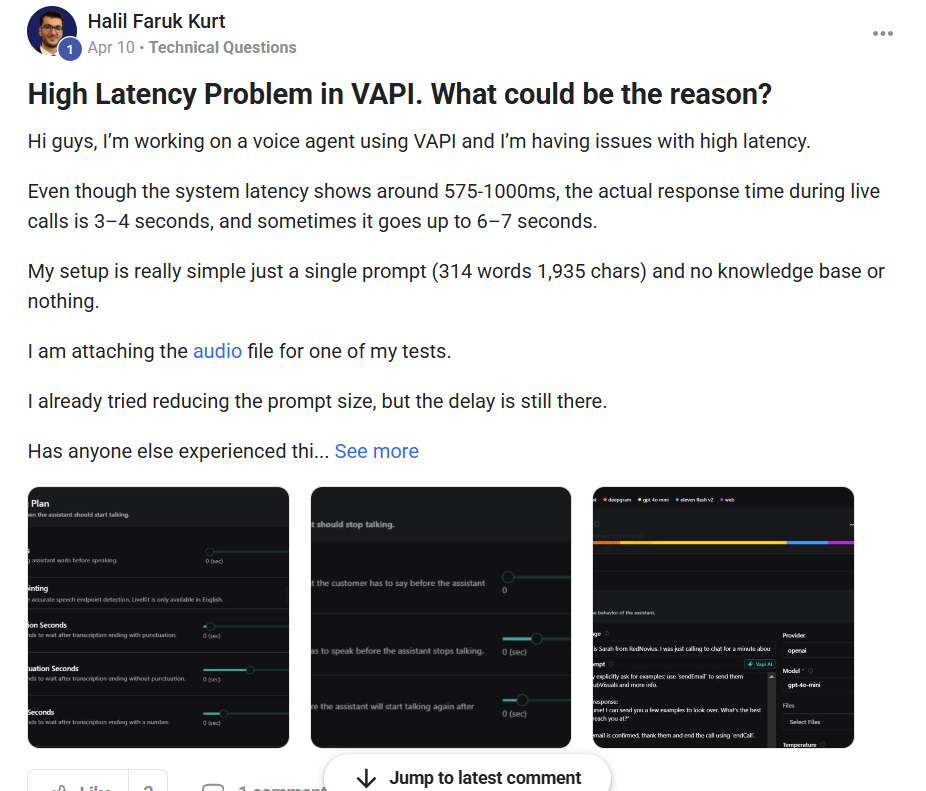
While Vapi AI claims to achieve an impressively low end-to-end latency of less than 500ms in optimal configurations, this requires extensive optimisation by experts. The model you select makes a huge difference in costs as well as latency, so developers should lookout for timely performance optimisation.
Retell AI provides multiple testing methods, each designed to validate different aspects of your agent’s behavior and performance.
You can set up automated test suites with real-world performance to catch any regressions early.
Vapi’s customer support is pretty limited. You have to either write an email or post a comment on the Discord community, and it can take multiple days to receive a response.
One of the users also complained that it's difficult to remove or cancel your Vapi subscription. Their bot support is unable to perform actions, and there is no human support person to take up their query.
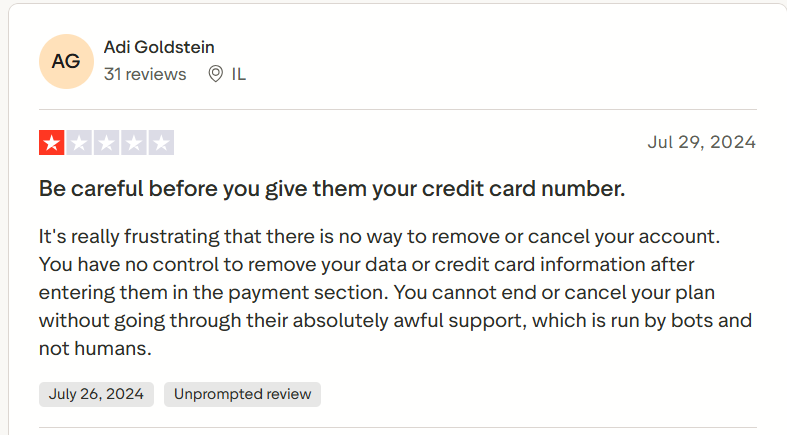
Vapi AI does take security quite seriously. It implements multiple security layers, including:
Vapi meets compliance needs for healthcare and regulated industries:
SSO, Role-based access control (RBAC) and SOC2 are only available through enterprise plans on request. There’s no built-in compliance dashboard, so reporting must be configured externally.
Retell AI provides live onboarding support with chat assistance and fast customer service to help teams launch smoothly.
One of Retell AI's users mentions, “What really sets RetellAI apart is their incredible support team. Any time I got stuck, their team was immediately available and extremely helpful, guiding me through every issue with patience and clarity. It's rare to find a company so responsive and committed to their users' success.”
Like everything in life, Vapi comes with tradeoffs — here’s a look at its pros and cons list:
Retell AI is one of the best alternatives to Vapi AI with transparent pricing and low-code infrastructure that lets you create voice agents quickly.
Unlike Vapi, Retell AI supports unlimited concurrent call capacity, allowing one agent to manage anything from dozens to thousands of calls in real time. Vapi’s scalability is more restrictive and often gated behind higher-tier plans.
Another big advantage of Retell AI is its transparent pricing model. It offers a pay-as-you-go model for their AI Voice and Chat Agents, with no platform fees. The cost for AI Voice Agents is $0.07+ per minute, and for AI Chat Agents, it's $0.002+ per message, which is relatively much cheaper than the Vapi AI’s total deployment cost.
Overall, Retell AI has a rating of 4.8/5 (780 reviews) with customers talking about low-latency, ease of use and natural conversations that flow smoothly. The customer support of Retell AI is responsive with clear documentation.
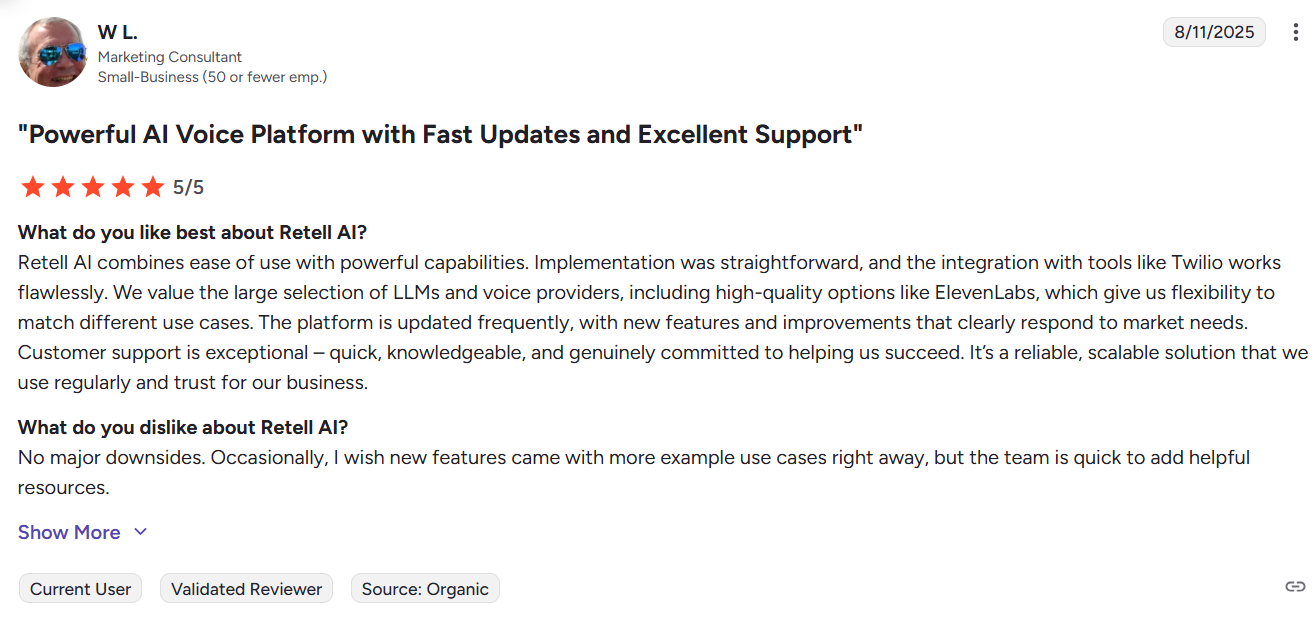
If your business requires a hyper-customised AI voice agent and has a team of developers, then a code-heavy platform like Vapi would be a nice option.
However, if your time and resources are limited, and you’re looking for an all-in-one agent building platform, then Retell AI wins the race.
Still in doubt? Check out why Retell AI is better than Vapi:
| Category | Retell AI | Vapi AI |
|---|---|---|
| LLM Model & Intelligence | Supported | Supported with cost for API |
| Custom Telephony | Native SIP Trunking | Not Supported |
| Warm Transfer | Supported | Not Supported |
| User Experience | Ease of Use, Intuitive Workflows | Must Know Code |
| Branded Calls | Supported | Not Supported |
| Post-Call Analytics | Real-Time Insights | Limited Analytics |
| Compliance | HIPAA, SOC2 Type 1&2, GDPR | HIPAA compliant, SOC2, GDPR |
Build your first real-time voice assistant with Retell AI today and experience effortless automation. Talk to our sales team now!
See how much your business could save by switching to AI-powered voice agents.
Total Human Agent Cost
AI Agent Cost
Estimated Savings
A Demo Phone Number From Retell Clinic Office
Revolutionize your call operation with Retell.

